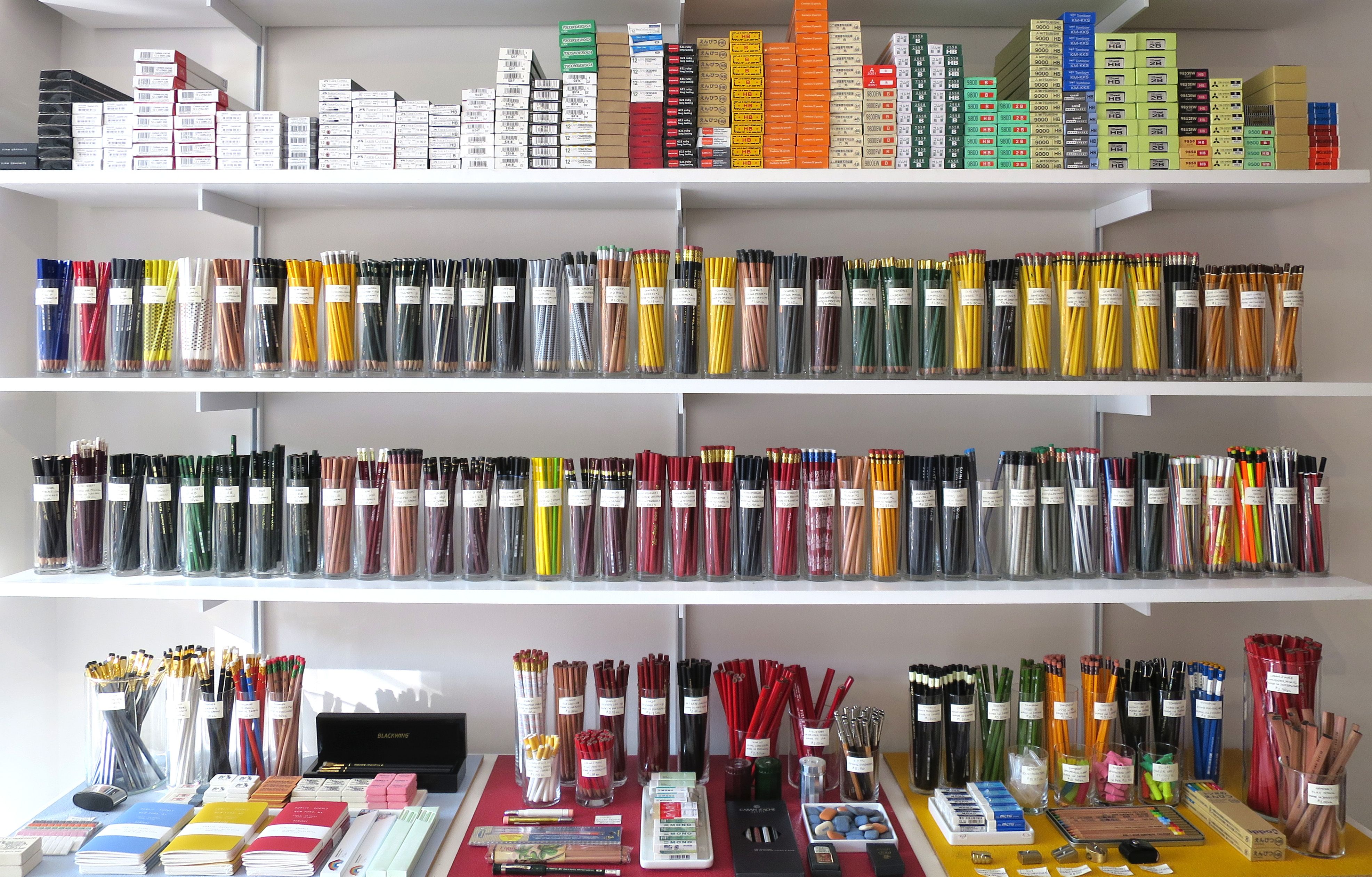
Caroline Weaver owns a pencil store in New York City and we caught up with her to discuss carpenter’s pencils and more.
The only carpenter’s pencils most lumberyards carry are used as advertising with the company name printed on them, and they crumble the moment you sharpen them.
Indeed! There are so many better carpenter’s pencils. We have really great ones from Caran d’Ache (Switzerland) and Viarco (Portugal) that are really popular with serious woodworkers.
Lee Valley makes great ones, too.
I have heard of Lee Valley, I have a couple of samples from them actually. They are really lovely.
SOLA are made in Romania, and they are a very thoughtfully designed carpenter’s pencil.
They are super unique, I love the ones I have. I wish I could stock them, but I haven’t yet found a source for wholesaling.
Would you illuminate for our readers the hallmarks of good pencils?
Good pencils must have a number of qualities. The most important is that the graphite core is perfectly centered in its casing–if it’s not it causes problems while sharpening. We also put a lot of emphasis on the type of wood its made out of. Cedar is generally considered to be the most ideal though there are a few other species that are commonly used that are terrific too, like Indian Poplar. As for graphite, the raw graphite itself should be finely milled so it’s not too scratchy but the rest generally depends on personal preference.
What strikes you about SOLA as an aficionado?
SOLA pencils are so unique because they are really terrific quality and come in a variety of sizes and shapes. I love the triangular ones because they don’t roll just as a flat pencil doesn’t, however, it can be sharpened in a regular pencil sharpener and be held by a hand in a more natural way.
What are the qualities of your personal favorite pencil?
I write with a really heavy hand so point retention is really important to me (the ability for the pencil to hold a point before it has to be sharpened again). I tend to prefer Japanese pencils because the graphite is often smoother and darker without being too smudgy and they put more emphasis on the eraser (if it has an eraser–many don’t).
What characterizes the durability and darkness of a pencil?
Pencil cores are generally made from graphite, clay, water, and often wax or polymer. The darkness of a pencil is directly related to how much graphite it contains–the more graphite, the darker and softer it will be. The harder the pencil is the less graphite it contains and the more durable the core probably is as it’s firmer and less fragile.
One of our art directors, Rodney Diaz, asked: Sharpening. The KUM automatic long point two-stage sharpener makes me want to sharpen the pencil even if it doesn’t need it. If you prefers something different, I don’t want to know, but it would still be interesting to know. What’s does you look for in a good sharpener? Besides a sharp blade…
Ha! Well, that sharpener is really popular but there’s one that does an even longer point that’s the same system. I hardly ever have to sharpen my pencils when I use it, and that’s the HUM Masterpiece long-point sharpener. Seriously, the holy grail of pencil sharpeners.
What first drew you to pencils and what keeps you excited about them?
My love for pencils has really been a lifelong thing. I’ve always appreciated the simplicity and tactility of the pencil. It’s so simple, yet it took centuries to find a way to make it the way we know it now. Pencils feel like something and smell like something. The way a pencil is used and the way a pencil works varies so much depending on who is using it–I love that about them, that it’s always a different experience.
Caroline Weaver operates CW Pencil Enterprise in New York City.
Fine Homebuilding Recommended Products
Fine Homebuilding receives a commission for items purchased through links on this site, including Amazon Associates and other affiliate advertising programs.

Reliable Crimp Connectors

Handy Heat Gun

8067 All-Weather Flashing Tape























